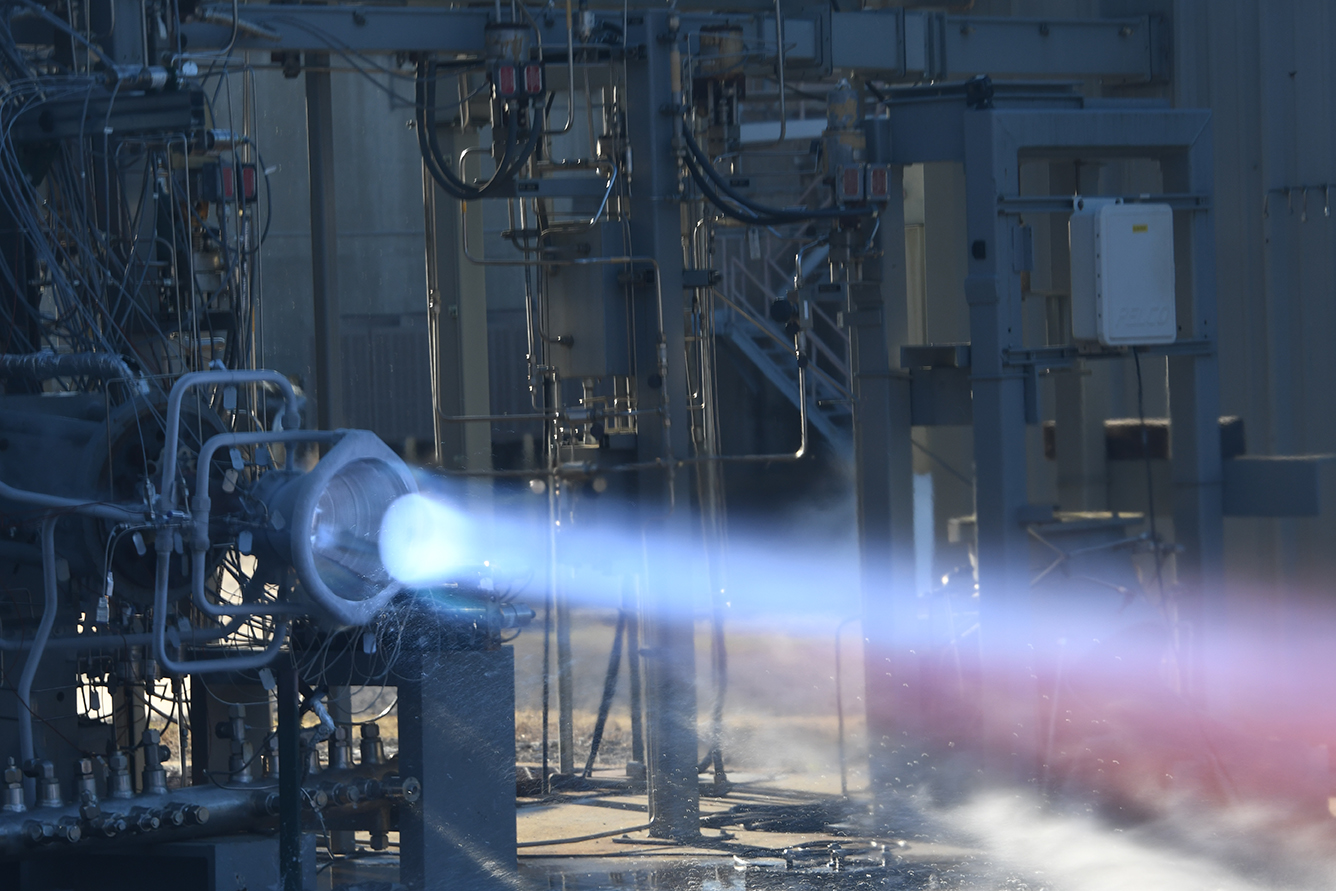NASA has announced the successful completion of a series of 23 hot-fire tests on two 3D printed aerospace engine components – a copper alloy combustion chamber and specially developed iron-nickel superalloy nozzle.
Throughout the month of November, the Administration proved that these DED-printed components were capable of withstanding the extreme heat that their traditionally manufactured counterparts usually experience during space flight. NASA has high hopes that additive manufacturing, which it classes under one of the five industries of the future, will aid in making aerospace production faster and more cost-efficient than ever before.
Tom Teasley, a Test Engineer at NASA’s Marshall Space Flight Center, states, “This 3D printed technology is a game-changer when it comes to reducing total hardware manufacturing time and cost. These hot-fire tests are a critical step in preparing this hardware for use in future Moon and Mars missions.”

Why conduct hot-fire tests?
The hot-fire test is one of the final stages of NASA’s engine testing regime, and is used to ensure the system as a whole is functioning and ready for lift-off. The test is designed to replicate launch conditions, whereby fuel is allowed to flow through the tanks, fuel lines, valves, and pressurization system and ignited.
The 23 hot-fire tests conducted at Marshall Space Flight Center lasted a total of 280 seconds over the course of ten days. NASA’s engineers were able to collect a mountain of data and measurements, including the pressures and temperatures in the main chamber and coolant channels. On top of giving the team a chance to record high-speed video footage of the chamber throat and exhaust plumes, the tests also allowed for the engine’s overall performance and efficiency to be calculated.
Performed as part of NASA’s Long-Life Additive Manufacturing Assembly (LLAMA) project, which Marshall leads for the Game Changing Development program, the tests ultimately aim to qualify 3D printing for use in the manufacturing of future lunar landers. The Marshall engineers already have plans to perform additional hot-fire tests to showcase the reliability of the 3D printed engine components.

3D printing among the stars
2020 has been a major year for 3D printing in the aerospace sector. Aerospace company Alba Orbital recently successfully integrated nine individual PocketQube satellites into a 3D printed deployer, which is set to launch this month on a SpaceX Falcon 9. Dubbed the AlbaPod V2, the structure was additively manufactured by 3D printing service bureau CRP Technology, and is made of the company’s own Windform XT 2.0 high-performance composite material.
Earlier on in the year, space technology startup Rocket Crafters announced the completion of the final testing stages for its Comet Series Hybrid 3D printed rocket engine. Similarly, aerospace company Rocket Lab’s partially 3D printed Electron Rocket was raised onto its launchpad as it entered its final stage of testing, ahead of the company’s mission with the U.S. Space Force.
Subscribe to the 3D Printing Industry newsletter for the latest news in additive manufacturing. You can also stay connected by following us on Twitter and liking us on Facebook.
Looking for a career in additive manufacturing? Visit 3D Printing Jobs for a selection of roles in the industry.
Featured image shows NASA fire-testing its 3D printed engine components. Photo via NASA.



